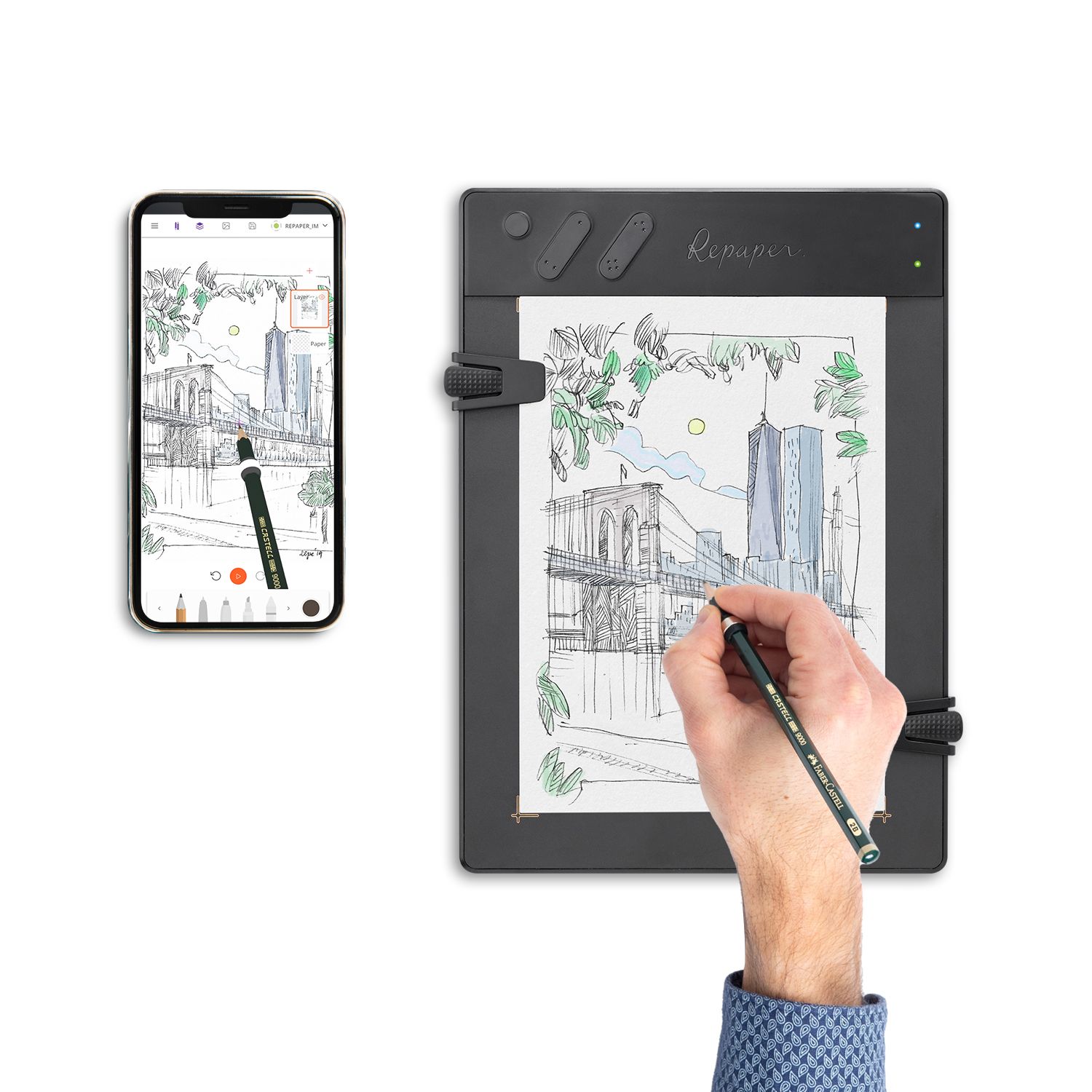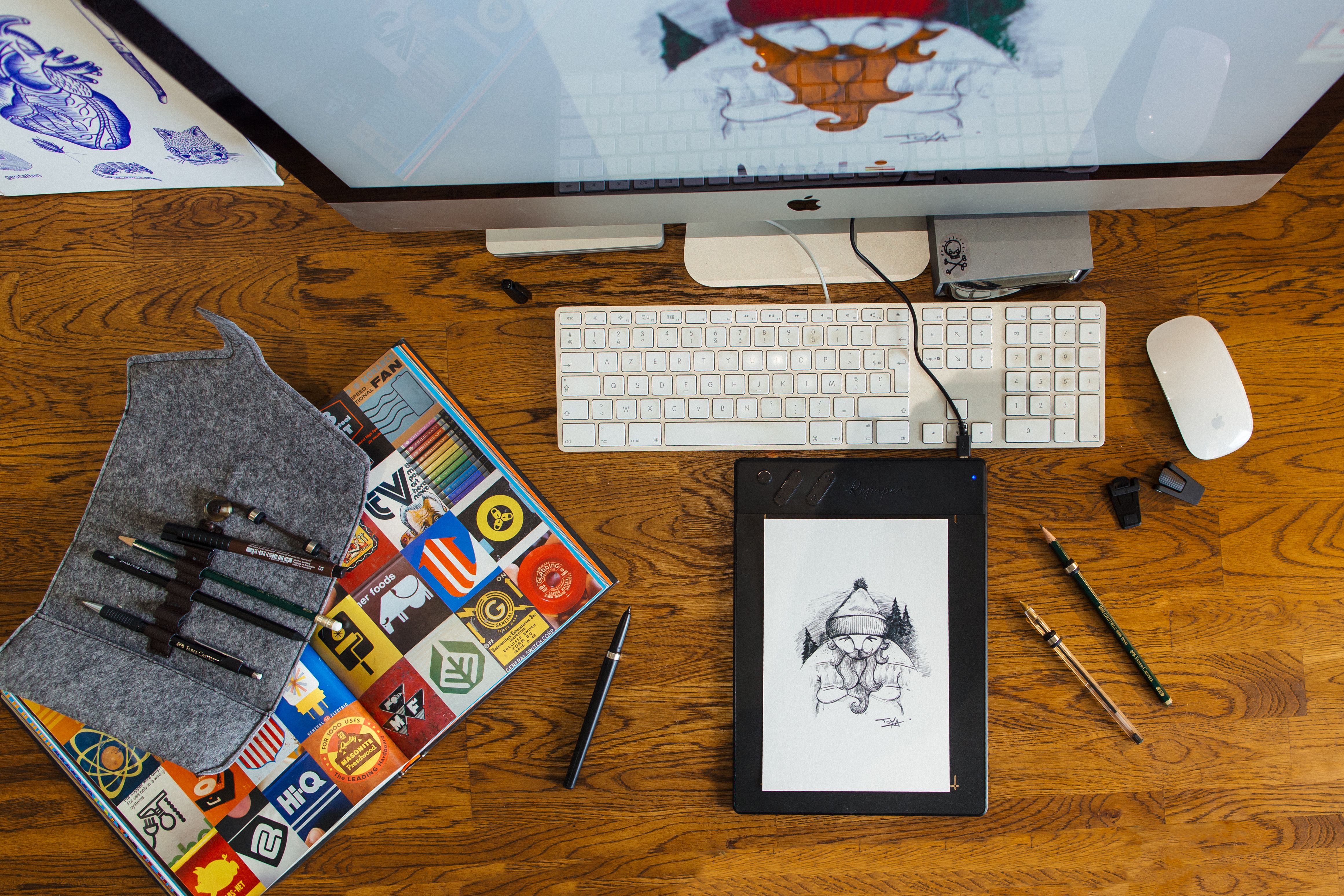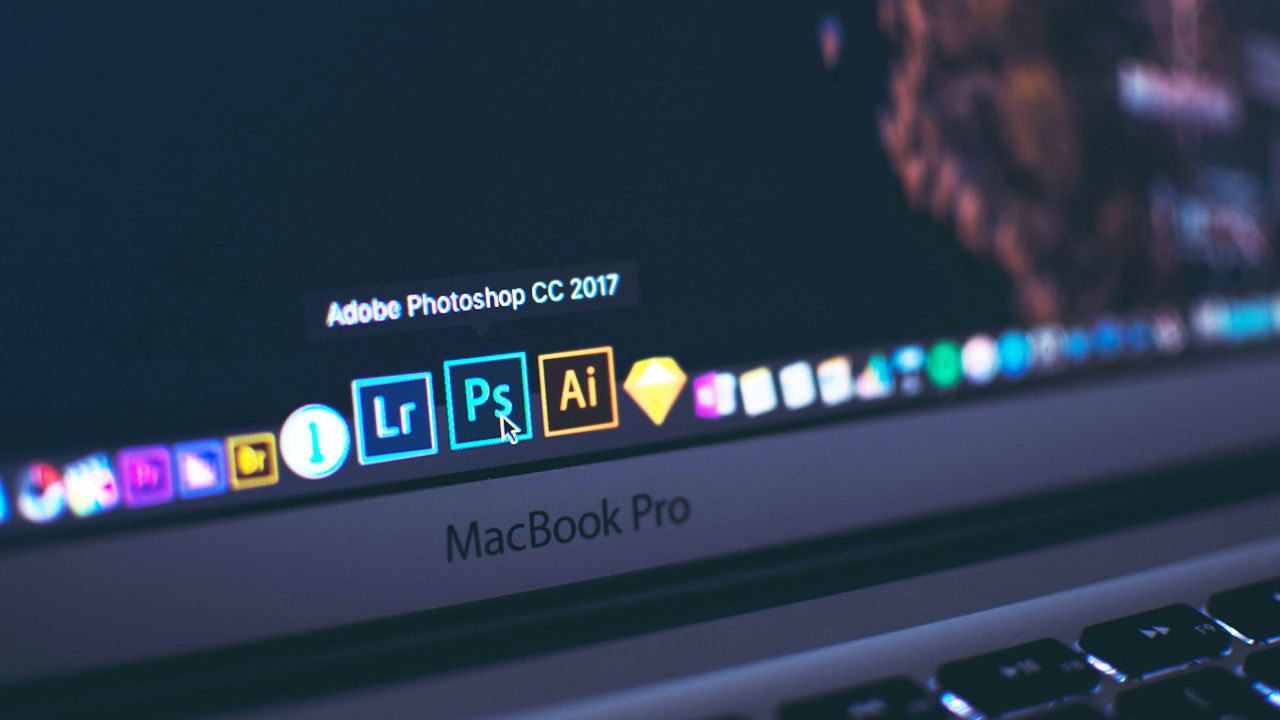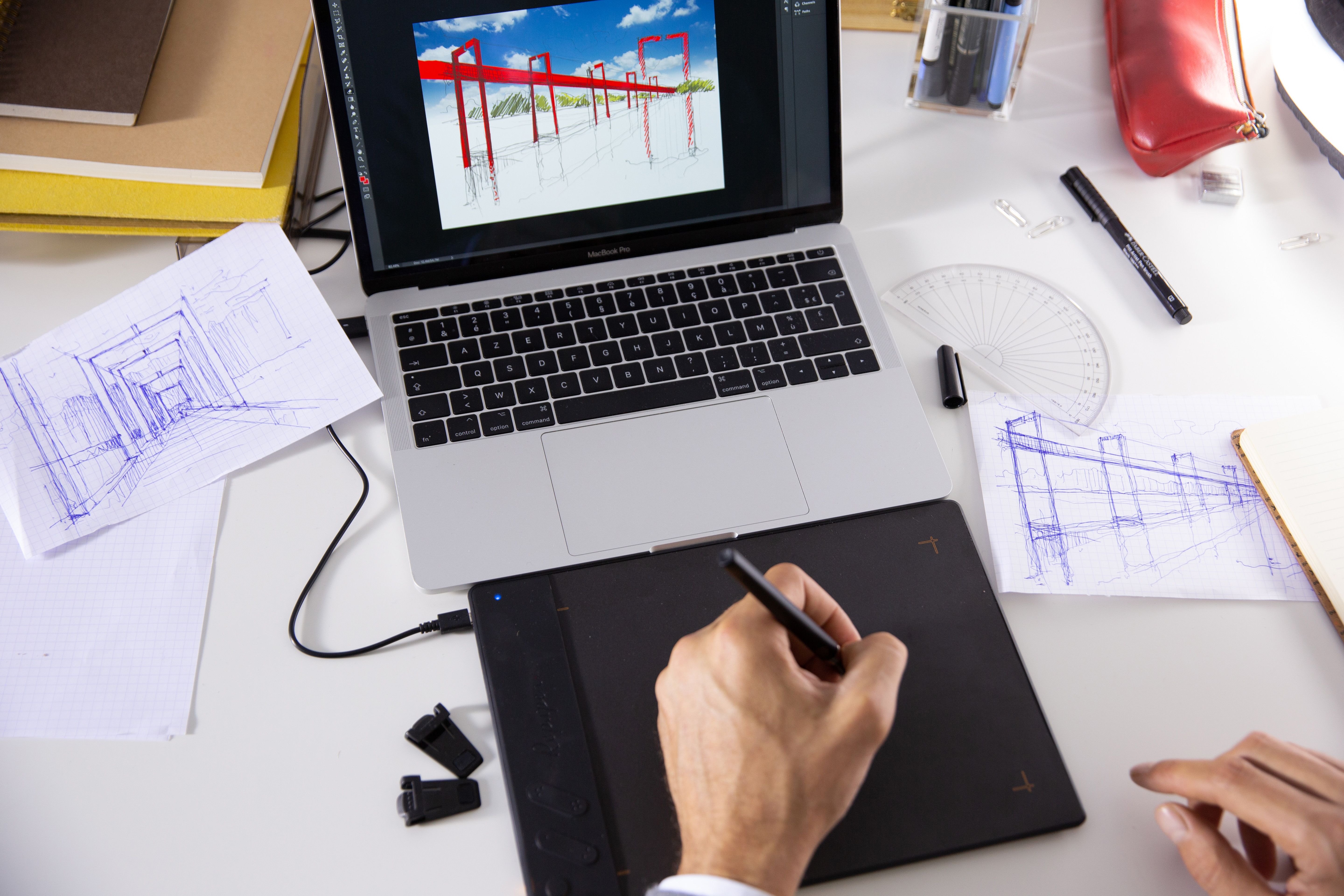
Digital arts: a glimpse of an up-and-coming discipline
How to define digital art?
Digital art is a generic term used to describe in a common way all the forms of arts calling upon computer or electronic tools, artificial intelligences, and in a general way to all the artistic productions related to sciences and technologies. Each artistic creation using digital technologies can ente the framework of digital art. Sound creations, electronic, virtual drawing, videos, ..., or even a mix of all these expressions are now part of the creations of digital artists.
Like music, which has been able to renew and democratize itself with the evolution of technology, digital art is now finding a new audience, and is becoming more and more a form of expression accepted and praised by the general public. A discipline that emerged in the 50's, its democratization has only taken place since the 90's, and the accessibility to the computer for the greatest number. Thus, many fields are still to be explored and digital artists innovate more and more each day to propose new creative works never seen before and totally new in the art world. The emergence of specialized museums, and the multiplication of exhibitions dedicated to digital art, show the craze that these disciplines provide, always in evolution with the progress of new technologies.


A short history of digital art
Digital arts have an indeterminate beginning. We can simply say that they arrived in parallel with the advent of new technologies, the latter having been diverted to produce artistic projects. Some would say that digital art was created in the 1950s with the first electronic images from oscilloscopes, generated for visual and aesthetic purposes only, but although these abstract symbols were an inspiration that caused a turning point in the hijacking of digital objects, and programming software thereafter, we could also cite a more distant source with the first attempts at electronic music that took place between the end of the nineteenth and early twentieth centuries.
Even if the origin of digital arts can be debated, and has no absolute truth, it is however necessary to note some great dates and artistic references which contributed to the rise of this new discipline. Ben Laposky's oscillillon 40, in 1950, is considered the first electronic image, created by oscilloscopes. The spatiodynamic tower of Nicolas Schöffer, metallic structure of several tens of meters high, is for its part the first interactive work using sensors, which, when they are activated by the disturbances crossing the zone of installation, transmit a signal activating speakers.
In 1963, the first algorithmic computers were used to create visual works and in 1971, with Aaron, an artificial intelligence program, the artist Harold Cohen created a printer that produced paintings autonomously, thanks to pre-recorded works on the computer.
In 1986, the first fully interactive creations with the spectator appeared, where the animation of the body in front of a movement sensor is retranscribed to create notes and thus make a sound object. It is then really with the Nineties, and the development of the computers and the general public programs, that digital art exploded. It is at this period that this one developed in an important way thanks to the detour of the software, and the creation of other softwares specifically dedicated to the art. From that moment on, the limits were broken and it is now possible to create compositions, from the most abstract to the most realistic.
Digital art, a discipline like any other.
Digital art: an art form in tune with the times.
Today, digital art is present all over the world, and impacts all bangs of society. The access to technology having spread and globalized, many artists, painters, and creative people of all countries and all kinds, have seized this phenomenon by proposing works all more different than the others. The same phenomenon is happening with digital art as with the renaissance and the emergence of perspective in paintings. Beyond the revolutionary techniques and the leap forward that innovation brings, whether in classical paintings or digital art, it brings above all a new way of operating and a new way of thinking about artistic practices as a whole. The perspective of the past corresponds to the advent of machines today. Computers, programming tools and artificial intelligence, bring a real novelty in the way of creating virtual works or inscribed in reality, and several currents could result from this technological progression.

The different possibilities offered by digital art.
Digital art designates a multitude of artistic trends linked to technologies, which are themselves in constant mutation. Some practices are now entirely part of the current world and are integrated into everyday life. However, the power of computers and computer programs growing every day more and more, it allows to glimpse and open new artistic horizons for the digital artist. Among the most famous forms of digital art, we can find several techniques used in our daily life, while others are still confidential and are only trying to emerge.
Digital painting.
Undoubtedly the best-known form of digital art, digital painting consists of drawing graphic works directly by computer. Using a graphic palette including a drawing tablet and a pen, as well as digital drawing software such as Photoshop, the artist creates, as on a sheet of paper, directly on the computer. He can use many options, brushes, effects and other tools, which offer a rendering that would be difficult to obtain with traditional painting or drawing instruments. Used in many fields such as illustration, video game design, animation or advertising, digital drawing is part of our daily lives, professionally or as a hobby. We talk more about digital painting in an article dedicated to this technique.

Design through programming.
One of the trends of digital art that we can find in our daily life is computer graphics programming. Used in large part for the design of websites, it consists of writing lines of code in a specific computer language, in order to give instructions to the computer, which will transform this code into forms and graphic objects visible on the screen. This allows the web site, or the graphic work, to take its final form and to go from a binary sequence of 1s and 0s, to a visual interface perfectly adapted to the user or the viewer.
3D printing.
Falling into the category of digital art through the use of a computer and technological tools such as the 3D printer, three-dimensional printing is a new form of digital art, increasingly used today. If it is still confined to an almost exclusively leisure or aesthetic application, this form of art, requiring a technical drawing and a programming on software upstream, spreads more and more in a professional context involving important projects. It can thus be integrated as well in a work of contemporary art museum as in the constructions of an architect or even in medicine. The designer will thus have to adapt to his environment and diffuse his creation in multiple conditions.

Other kinds of emerging works.
Digital art allows to express itself in many ways. The possibilities are almost infinite and artists are bursting with creativity and inventiveness to launch new movements that are more or less lasting in time. We find among others the fractal art consisting in producing images, videos or music from fractal figures. These mathematical figures, whose details are observable at all scales, allow to find the same image as the original one in case of zoom. The fractals can be transcribed into sound works by forming particular loops.
In order to have an infinite precision, it is necessary to use specific software to produce these fractals. Glitch Art is also a form of digital art using bugs in computer files, most often resulting from videos, to make an aesthetic object of it. One could also quote the generative art where the works are generated all alone thanks to a computer program, the interactive art involving the spectator or the musical computer science for the creation of music thanks to software. The movements of digital art are numerous, and we cannot today quote them all so much their number is important.
The democratization of Digital Art in the art world.
Over time, access to technology has become easier. With a simple phone, it is now possible to create a digital work. All it takes is your creative force to find a use for technological objects, new or old, and create a piece of digital art worthy of the name. This accessibility allows artists to get into digital art, and even art school courses offer an artistic and cultural education including sections entirely dedicated to digital art and its multiple facets. We can now find digital creation in various sectors such as live performance, virtual reality or augmented reality, video games, animated films, digital installations, sculpture, robotics, or various other artistic disciplines using new forms of digital creation. The most obvious proof of the acceptance of this discipline as an art form in its own right is the increased presence of digital artworks in auction rooms.
Thanks to the "blockchain" technology, inherited from cryptocurrencies, and allowing to authenticate and validate the ownership of a computer file, digital works of art can now enter the art market, and be sold like a classic contemporary creation with an authentication certificate. Thus, like a traditional painting that could be reproduced to perfection by a painter who knows the artist inside out, digital works can be replicated, but it is the act of ownership that will guarantee the value of the original work. Digital art thus becomes speculative and enters by the big door into the great family of art. Proof of this is the sale, in 2021, of a digital collage for more than 60 million euros during an auction organized by the famous auction house Christie's.

Getting into digital art.
Starting to make digital art is now within the reach of everyone and of all budgets. As long as you have inventive ideas, you can hijack digital and electronic objects, including new and old technologies, as well as use dedicated objects for digital creation. Designers will easily find a way to explore new frontiers with a simple drawing tablet and dedicated drawing software. With these tools, digital painting, to make digital paintings or animation drawings, is within reach as the proposed interfaces are now accessible to all.
Musicians, on the other hand, will be able to use a computer-assisted music software, which will allow them to create musical works thanks to a controller like a master keyboard, and to the numerous digital synthesizers integrated into the software. The border between traditional art and digital art is sometimes thin, and computer peripherals allow to make the junction between the two disciplines. This is the case of master keyboards, offering for some models the same sensations as a traditional piano, or graphics tablets allowing to draw on paper, while reproducing one's works on a computer. It becomes easy, with all the possibilities existing today, to make the passage between traditional art and digital art.

To conclude ...
A digital work finally requires only the use of a digital object, generally a computer program, to be defined as such. That's why many currents, in many fields of art, have developed over the years. Today, digital art is within everyone's reach, and is an integral part of our lives. Exhibitions are flourishing, sales of digital works are increasingly important, and the entry as well as the acceptance of these disciplines in plastic arts, visual arts and in modern art in general, are, to date, acted by the artists and the general public. The different currents and the history of digital art are even studied today in the greatest specialized schools. It is up to you to launch yourself into digital art, and to glimpse all the possibilities that computers and technologies can bring you.

Discover more
Drawing on a computer: how to draw on a computer?
Thanks to the computer, it is now possible to draw without limits and without having to spend hundreds of euros in drawing materials consumed at a high pace.
Discover and choose the best digital drawing software.
Using a drawing software is a compulsory learning process to create digital creations.
Drawing with a graphic tablet: tips and tricks.
Digital drawing allows many possibilities and the drawing tablet has become a must-have.
Newsletter
Keep up to date with iskn news and events
Free standard delivery
for purchase over $80
30-day returns
on all products
Secure payment
with Stripe & PayPal
Pay in 4
with PayPal
Customer service
chat with us


